#Moesia/North
Explore tagged Tumblr posts
Text
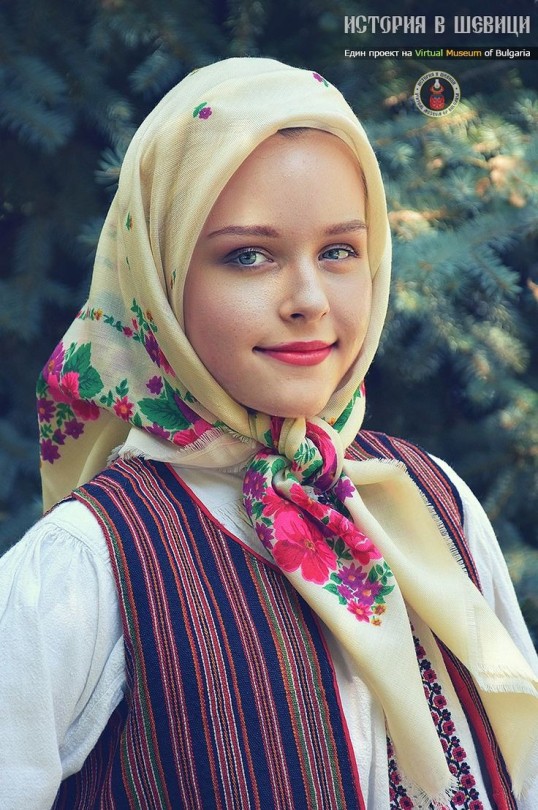

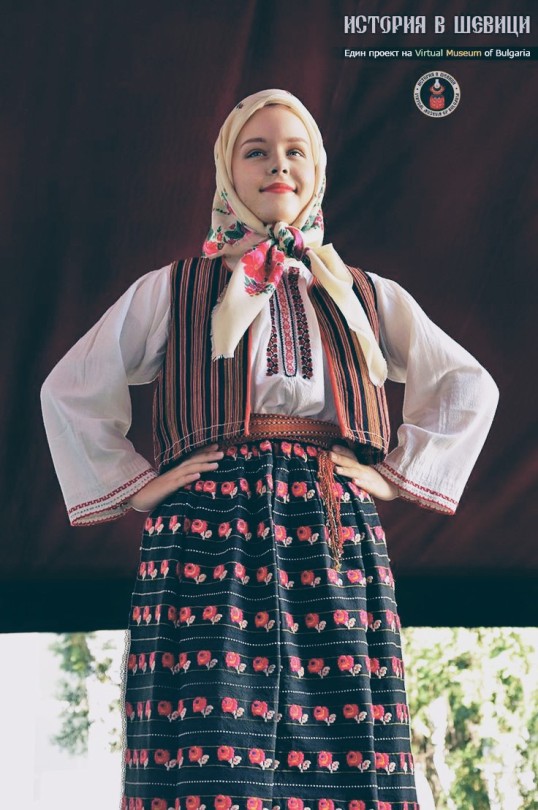
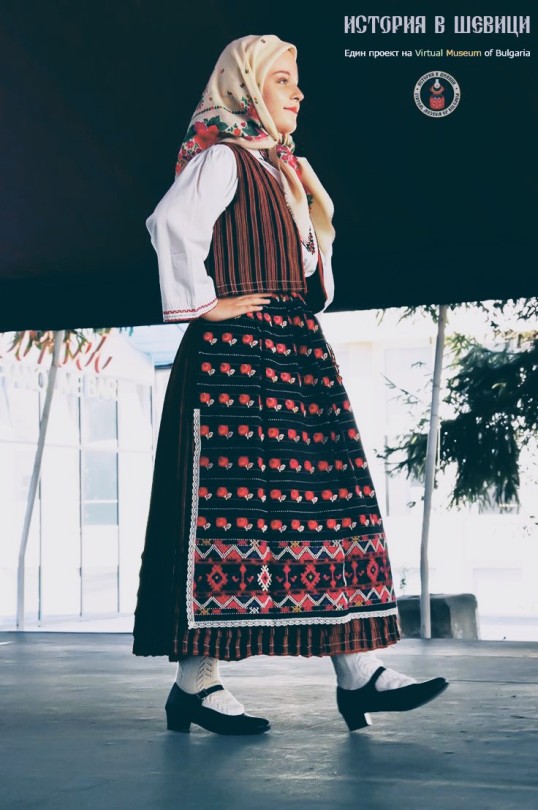
Bulgarian Catholic traditional clothing, Dragomirovo village, Svishtov province. | Носия на българи-католици от Букурещ, Румъния, завърнали се в България след Освобождението, понастоящем в с. Драгомирово, Свищовско.
Photos by Slavyan Stoyanov
2 notes
·
View notes
Photo
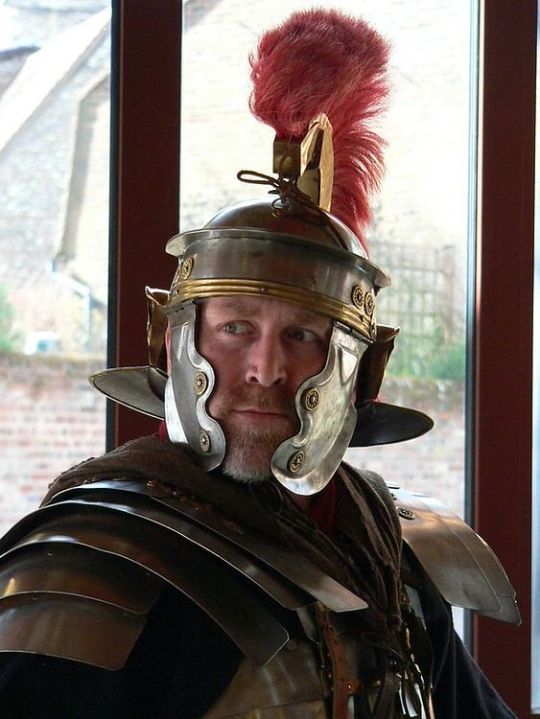
Legions of Noricum, Raetia & Dacia
The provinces Noricum, Raetia, and Dacia served as a buffer protecting Roman Empire against any possible outside threat. However, the region posed several internal problems for Rome: Pannonia and its ally Dalmatia rebelled against Roman occupancy, causing a three-year war, and Moesia was invaded by the Dacians during the reigns of both Domitian (r. 81-96 CE) and Trajan (r. 98-117 CE).
Lastly, during the 2nd and 3rd centuries CE, the region was repeatedly invaded by the Goths, Alemanni, and Marcomanni. While Noricum, Raetia, and Dacia provided a buffer between Rome and the Germanic tribes to the north, in time, they succumbed to the invaders they were supposed to keep out.
The Province of Noricum
Located in the eastern Alps between Raetia and Pannonia, its ideal location south of the Danube and rich deposits of iron ore and gold made Noricum a valuable asset to the coffers of the Roman Empire. The discovery of gold in the 2nd century BCE had drawn Roman settlers into the region only to be quickly expelled by the native Taurisci. However, Roman merchants continued to conduct business through small trading settlements. Always viewed as an ally, the region was finally conquered in 16 BCE during the reign of Roman emperor Augustus (r. 27 BCE to 14 CE). However, unlike other provinces, it did not receive a legion of its own – Legio Italica II – until the reign of Marcus Aurelius (161-180 CE). The province was later divided into two – Noricum Ripensis and Noricum Mediterranean – by Diocletian (284-305 CE). It was invaded by northern Germanic tribes and abandoned in the 5th century CE.
Continue reading...
25 notes
·
View notes
Text

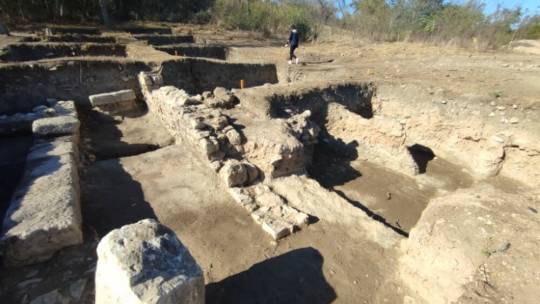
Archaeologists Discovered Roman Floor Mosaics in Bulgaria
Archaeologists discovered floor mosaics with early Christian designs and nearly 800 artifacts in the archaeological reserve of Marcianopolis in Devnya, in the northeastern part of Bulgaria.
The Roman town of Marcianopolis (present-day Devnya) in northeastern Bulgaria appears to have originated as a Thracian settlement. It was later inhabited by Hellenized settlers from Asia Minor and named Parthenopolis.

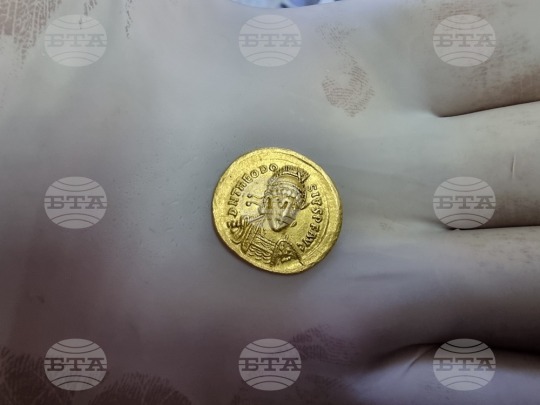
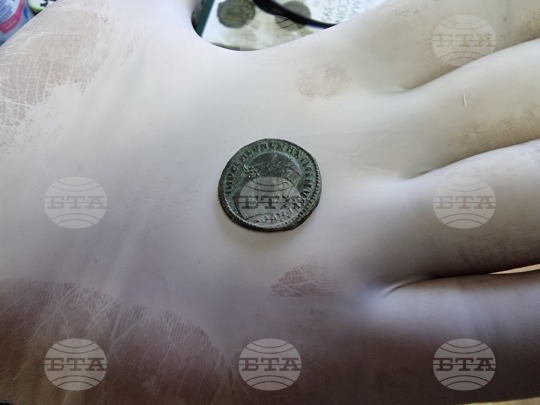
Roman Marcianopolis was established around 106 CE, following Trajan’s campaigns in Dacia to the north. The settlement was named after his sister, Ulpia Marciana. At the crossroads between Odessos (modern Varna), Durostorum, and Nicopolis ad Istrum, as well as the location of plentiful springs, Marcianopolis became a strategically important settlement.
Diocletian’s administrative reforms in the late third century CE divided Moesia Inferior into Moesia Secunda and Scythia Minor, with Marcianopolis serving as the former’s administrative capital. Marcianopolis experienced its most prosperous period during the middle of the fourth century CE. From 367 CE to 369 CE, the eastern emperor Valens used Marcianopolis as his winter quarters during campaigns against Visigoth incursions in the region. During this time, it served as the Eastern Empire’s temporary capital.

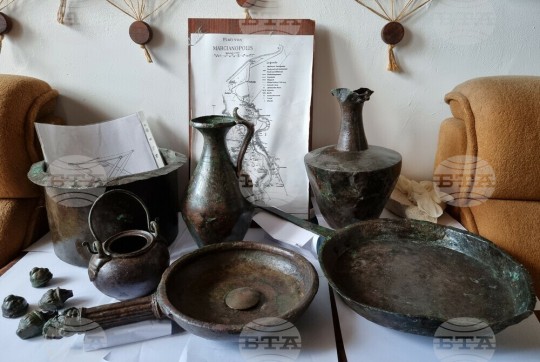

Floor mosaics with early Christian designs were found in the remains of a building. Archaeologists are not yet sure whether it was a public building or it belonged to a rich Roman citizen.
The tentative dating of the mosaics is in the first half of the 4th century AD.
The finds from the current archaeological season in Devnya contain another thousand bronze coins, several clay lamps and two clay vessels, which are awaiting scientific processing and restoration.
During the past archeological season, researchers restored bronze vessels discovered in the 1990s in a brick-walled tomb dating to the late 2nd – early 3rd century.
The vessels had a ritual use and were related to the personality of the person buried, Mosaic Museum director Ivan Sutev said in a statement to BTA.
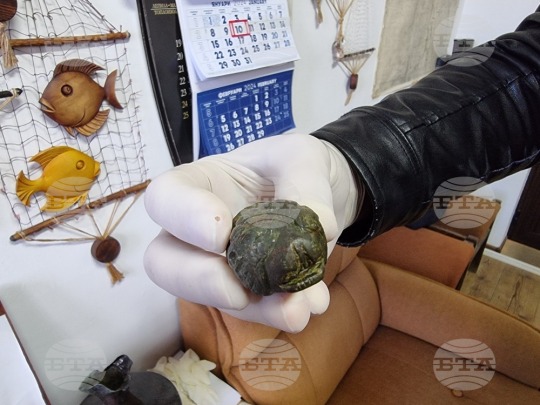

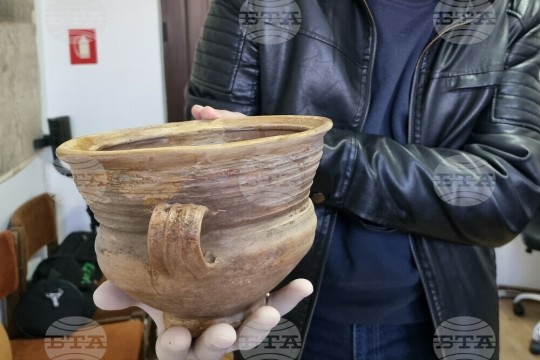

They are richly decorated and the workmanship is exquisite, he added. The find includes a vessel for pouring liquids as offering to a deity, and a wine jug with a trefoil mouth (oenochoe). A simple kitchen pan was also found along with these. All this leads archaeologists to suggest that a Roman citizen of Marcianopolis may have been laid to rest in the tomb, but that he may have had more specific functions: a soldier, a cook, or even a priest, Sutev said.
Pottery that was discovered in the basilica’s environs during excavations in 2023 has since been restored. Among these are a mortarium vessel for liquids and an exquisite crater-shaped pot for liquids. These were located in the structure with the mosaic floors. Coins from the time of Emperor Theodosius II were also found scattered on the floor.
In 447, Attila’s Huns captured and destroyed Marcionopolis after conquering the entire Balkan Peninsula but failing to capture Constantinople. That is determined by 20 gold coins scattered on the floor of the building being studied. On one side of the coins is an image of Theodosius II, while on the other is the patron goddess of Constantinople. Among the coins discovered during the Marcianopolis excavations were those from the city’s founding in the second century. The latter are dated to the sixth century, around the time of Emperor Justinian.
By Oguz Buyukyildirim.
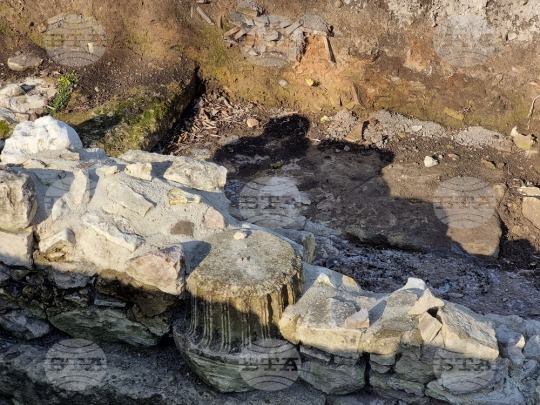
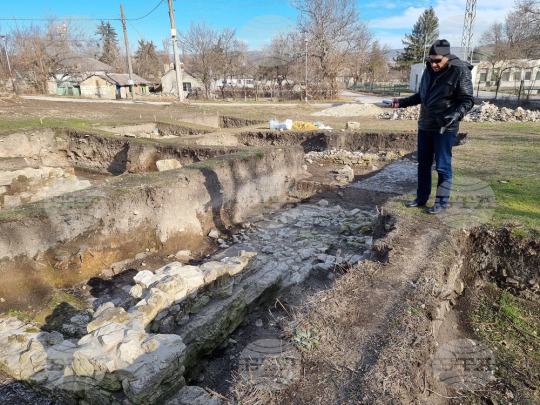
#Archaeologists Discovered Roman Floor Mosaics in Bulgaria#The Roman town of Marcianopolis#gold#gold coins#roman gold coins#ancient artifacts#archeology#archeolgst#history#history news#ancient history#ancient culture#ancient civilizations#roman history#roman empire#roman art#Emperor Theodosius II
44 notes
·
View notes
Text
The real Alatheus and Saphrax

Alatheus
Alatheus (fl. 376–387) was a chieftain of the Greuthungi. He fought during the Hunnish invasion of 376, engaged in war with Rome from 376 to 383, and incursions into the Balkans in He is most famous for his participation at the Battle of Adrianople in 378.
After the death of the Gothic King Vithimiris while fighting against the Huns in 376, Alatheus became, with Saphrax, co-regent and guardian of Vithericus, infant son of Vithimiris. He helped in the leadership of the great Gothic migration before the Hun onslaught, he crossed the Danube while Rome was busy with Thervingi refugees in that year. He soon allied himself with the Thervingi leaders Fritigern and Alavivus against Rome.
Alatheus eluded the Romans and rampaged through Thrace and Moesia in 377–378. He marched to Fritigern's aid against Emperor Valens at the battle of Adrianople in 378, in which Valens was killed when Alatheus' forces were victorious. He continued to raid Thrace and northern Greece, but was defeated by Theodosius the Great's general Promotus, and he settled on the north side of the Danube. He appeared on its banks again in 386, with the intention of invading the Roman provinces again. His forces were, however, repulsed, and Alatheus was slain.
Saphrax
Saphrax (died c. 400) was a Greuthungi chieftain, who led the tribe along with Alatheus. Both names appear to have been Alanic; they may have been Sarmatian/Alan. After the death of the King Vithimiris while fighting against the Huns in 376, Alatheus and Saphrax became regents and guardians of Vithericus, infant son of Vithimiris. He and Alatheus commanded the Greuthungi, while Fritigern commanded the Thervingi, numbering an army of 10,000 (according to contemporary Ammianus Marcellinus) in the Battle of Adrianople in 378 against the Roman Empire. It is theorized that Saphrax led a Hun-Alan contingent. Ending in defeat for Rome, many of their followers rampaged through the Eastern Empire until they were settled years after by Theodosius treaties in Pannonia Prima. Remnants were recruited into the Roman army.
3 notes
·
View notes
Text

Dacians & Romans War
The Dacians were the first to inhabit the territory of modern-day Romania. The Dacian empire becomes more powerful under the rule of Bure Bista (82 BC-44 BC). However, the Dacians did not escape the expansion of the Roman Empire. The Hungarian Kingdom had conquered Transylvania (the middle part of Romania) already in the 11th century. The Ottoman Empire was threatening the Romanians during their siege to Central Europe, in which they were successful until the fall of Constantinople in 1453. The Romans then colonized and lived within the territory (until the 3rd century AD), now called Romania. Centuries of migratory tribes' invasions followed the fall of the Roman Empire. Roman Dacia was of great importance to the military stationed throughout the Balkans and became an urban province. In 101, the Dacians led massive assaults on the Roman legions. In 102 Trajan moved his army down the Danube to Oescus. There the Roman armies converged for a final assault and defeated the Dacian army at the Battle of Tapae this led to the end of the conflict between the two and they were at peace in the end.
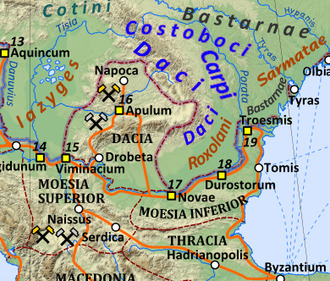
Map of Dacia soldiers
This is a tiny bit of the map where the Dacians had marched to invade and protect their contry away from the Romans. The areas circled in red were all the areas they had fought and marched in during the AC period. The Dacians wanted to remain out of the borderline for more safety so the Romans do not have an easy way of winning over or causing deaths.
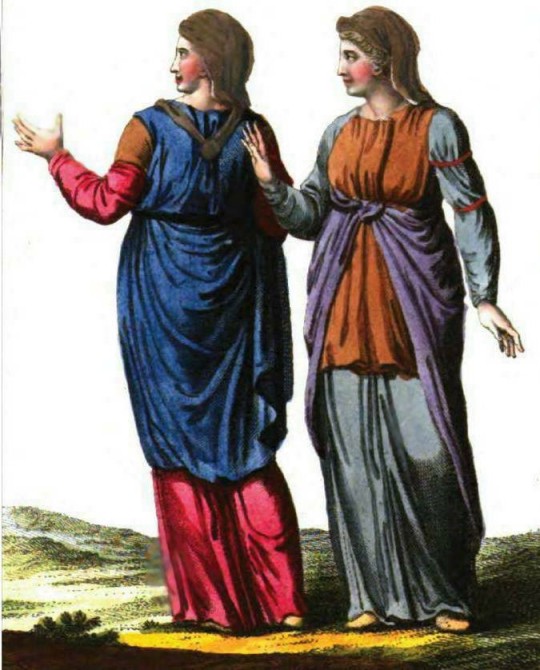
History Fashion
The Romanian popular costume finds its roots in the part of Thracian, Dacian and Getae ancestors and resembles that of the peoples of the Balkan Peninsula, of course with differences consisting of decorative and colourful details. Before the occupation of Romans over Dacia, the women’s clothing differed from nowadays traditional clothing and we get this evidence from the portrayal of Dacian women in the Trajan column. Dacian women wore shirts rippled at the neck, sleeves were either long and wide or short, and the dress was long to the ground over which sometimes was attached a wide draped mantle. On the feet, they wore leather sandals in summer and fur sandals in winter. This idealisation of Romanian clothing appeared in the mid-19th century in order to differentiate their culture from the other ones. Nowadays, the Romanian people as a national motif during certain events and celebrations in folk dances.
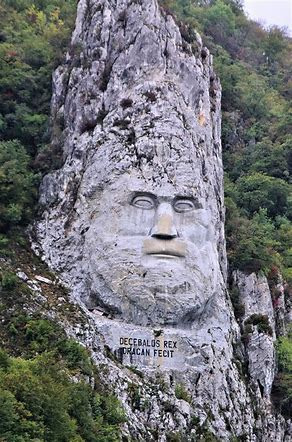

Decebalus
Decebalus was the last Dacian king as he was famous for fighting within three wars and success in every war he had, he was the bravest and strongest king that fought with the other Dacians beside them. He was honoured and respected for his help in saving them and fighting for his own people. He fought against the Roman Empire bravely and tried to protect his people first. He had changed their world completely. After raiding south across the Danube, he defeated a Roman invasion in the reign of Domitian, securing a period of independence during which Decebalus consolidated his rule. When Trajan came to power, his armies invaded Dacia to weaken its threat to the Roman border territories of Moesia. Decebalus was defeated and remained in power as a client king but continued to assert his independence, leading to a final and overwhelming Roman invasion north of the Danube in 105 AD. The sculpture shown here was Decebals face that was carved in throughout time to remember how brave he was for us and protected their country well because of him, he cannot be forgotten as he is on a high cliff based in Romania. To this day, the Decebal statue is still standing and able to visit.
Here is more information if you would like to know more about the history of Decebal and how he became a brave hero in Romania.
2 notes
·
View notes
Text
Constantius Chlorus: The Architect of Stability and Father of an Empire
Early Life and Military Ascendancy Constantius was born on March 31, around 250 AD, in the region of Dardania, located within the province of Moesia Superior—an area corresponding to modern-day Serbia and parts of North Macedonia. The rugged terrain of the Balkans, with its rolling hills and dense forests, was a frontier region that often bore the brunt of barbarian invasions. This environment…
0 notes
Text

✒️BRANKA M. GUGOLJ
DANIJELA T. TEŠIĆ – RADOVANOVIĆ
UNIVERSITY OF PRIŠTINA WITH TEMPORARY HEAD OFFICE
IN KOSOVSKA MITROVICA, FACULTY OF PHILOSOPHY,
DEPARTMENT OF HISTORY OF ART
SUMMARY THE ORIGIN OF ANTINOUS CULT
IN ROMAN SETTLEMENT NEAR SOČANICA (today's Republic of Kosovo)
A Roman settlement, located near the village of Sočanica, was partly explored around 1960's. Systematic excavations headed by archaeologist E. Čerškov and resulted in quite a large number of mobile and immobile finds helped form a clearer picture of the history, economy and urban layout of the settlement known as Municipium DD. With this we want to draw attention to the temple of Antinous, in particular to the origin of Antinous cult in Sočanica. Apart from Lanuvium, Carnuntum and Hadrian's villa in Tivoli, where this cult has been confirmed with epigraphic evidence, the temples consecrated to Antinous are rare in the western part of the Roman Empire. Judging by the spatial organization and some aspects of the cult, the sanctuary has certain analogy with the sacred complexes erected in Greece in the time of the emperor Hadrian. In Municipium DD there occurred the binding of the Antinous cult, in the form which it was practiced in the West, with the cult practices conducted in East. While in the western parts the followers of the cult belonged to the circle of Emperor's closest associates, imperial slaves, and freed slaves; in the eastern parts of the empire the initiators were senators and wealthy citizens of Greek origin who in this way wanted to show their devotion to the Emperor. For the same reasons the cult was introduced in Sočanica.
*Municipium Dardanorum or Municipium Dardanicum was a Roman mining town whose life lasted from the 2nd to the 4th century AD, that was connected with the workings of (Metalla Dardanica). Its remains are situated in the northern part of Kosovo, located approximately 27 kilometres north of Mitrovica, about 65 km northeast of Ulpiana in the Municipality of Leposavic, localized in the village of Sočanica in the province of Moesia Superior, later the Roman province of Dardania.
KEY WORDS: Antinous, cult, temple, Hadrian, Municipium DD,
Sočanica.
Picture: REMAINS OF THE TEMPLE OF ANTINOUS IN SOČANICA (today's Republic of Kosovo)
1 note
·
View note
Photo
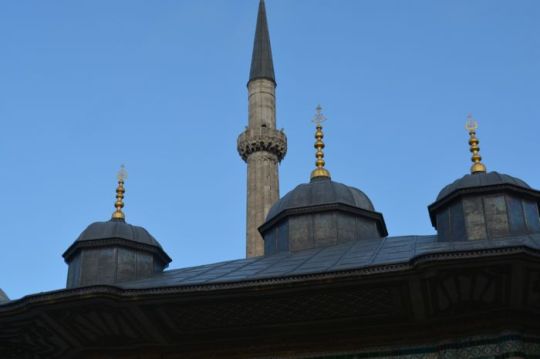
Against the Persians and Hellas
Thracian kingdoms waged wars against the Persians and Hellas for centuries. But the powerful Macedonian state of Philip II managed to crash them. It was his son, Alexander the Great, who quickly appreciated the military virtues of the Thracians and let them join the multilingual Macedonian army. After his death in 323 B. C. the Thracian king Seuth III succeeded to restore partially the former state and so the walls of the new capital city of Seuthopolis rose close to the location of present-day Bulgarian town of Kazanluk.
During the 3rd century B.C. the Romans managed to conquer the ancient Thracian lands. Later, in 74 B. C., a slave of Thracian origin who ‘graduated’ a gladiator school and became famous under the name of Spartacus headed the most continuous and mass insurrection in ancient Rome. That was the period of the so called Romanization of the Thracian world which continued until the 4th century A. D. when “The Great Migration of Peoples” began and the Thracians had to keep Celts, Huns, Goths, Avars and other barbarian tribes from invading their lands. In these circumstances the Thracians – partially Hellenized and Romanized, and having their rich and complex cultural heritage – had to stand before one of the most significant historical events for them: the disintegration of the Roman Empire in 395. In less than a century its western half was put to a collapse under the ravaging barbarian tribes from the north but the eastern part survived under the name of Byzantium with Constantinople as a capital city. Those were the days when the founders of the First Bulgarian Kingdom stepped Private Tours Balkan onto their future land…
Slavs and Proto-Bulgarians
During the 4lh to 7lh centuries the Slavs were the most multitudinous peoples in Europe.
They belonged to the Indo-European linguistic family and historians classify them usually in three main divisions: West Slavs include Poles, Czechs, Slovaks and the Wends who lived in Germany east of the river Elbe; East Slavs include Great Russians,
Little Russians (Ukrainians) and White Russians (Belorussians);
South Slavs include Serbs
Croats, Slovenes, Macedonians and Bulgarians. Originally the Slavs inhabited the lands to the north of the Carpathian Mountains but by the beginning of the 6th century Slavic tribes undertook marches to the south and crossed the Danube to loot in the territory of the Byzantine Empire. At that time a tribe of Tatar nomads, the Avars, established a kingdom (407- 653) in central Asia. In 558 they crossed the Urals and settled in Dacia after which started threatening the western countries and, of course, Constantinople. The Avars forced some of the Slavic tribes to settle permanently in various regions of the Balkan Peninsula. So were differentiated the “Bulgarian group” – which stayed in Moesia, Thrace and Macedonia – and the Serbo-Croatian group which gradually withdrew to the western half of the peninsula.
0 notes
Photo
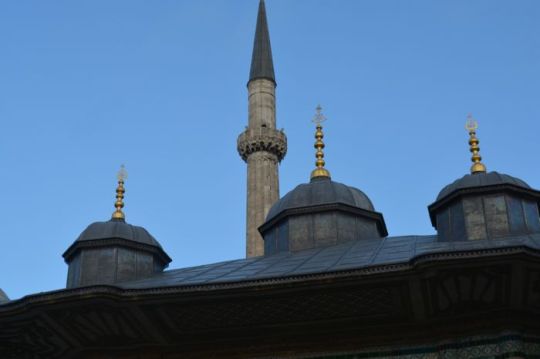
Against the Persians and Hellas
Thracian kingdoms waged wars against the Persians and Hellas for centuries. But the powerful Macedonian state of Philip II managed to crash them. It was his son, Alexander the Great, who quickly appreciated the military virtues of the Thracians and let them join the multilingual Macedonian army. After his death in 323 B. C. the Thracian king Seuth III succeeded to restore partially the former state and so the walls of the new capital city of Seuthopolis rose close to the location of present-day Bulgarian town of Kazanluk.
During the 3rd century B.C. the Romans managed to conquer the ancient Thracian lands. Later, in 74 B. C., a slave of Thracian origin who ‘graduated’ a gladiator school and became famous under the name of Spartacus headed the most continuous and mass insurrection in ancient Rome. That was the period of the so called Romanization of the Thracian world which continued until the 4th century A. D. when “The Great Migration of Peoples” began and the Thracians had to keep Celts, Huns, Goths, Avars and other barbarian tribes from invading their lands. In these circumstances the Thracians – partially Hellenized and Romanized, and having their rich and complex cultural heritage – had to stand before one of the most significant historical events for them: the disintegration of the Roman Empire in 395. In less than a century its western half was put to a collapse under the ravaging barbarian tribes from the north but the eastern part survived under the name of Byzantium with Constantinople as a capital city. Those were the days when the founders of the First Bulgarian Kingdom stepped Private Tours Balkan onto their future land…
Slavs and Proto-Bulgarians
During the 4lh to 7lh centuries the Slavs were the most multitudinous peoples in Europe.
They belonged to the Indo-European linguistic family and historians classify them usually in three main divisions: West Slavs include Poles, Czechs, Slovaks and the Wends who lived in Germany east of the river Elbe; East Slavs include Great Russians,
Little Russians (Ukrainians) and White Russians (Belorussians);
South Slavs include Serbs
Croats, Slovenes, Macedonians and Bulgarians. Originally the Slavs inhabited the lands to the north of the Carpathian Mountains but by the beginning of the 6th century Slavic tribes undertook marches to the south and crossed the Danube to loot in the territory of the Byzantine Empire. At that time a tribe of Tatar nomads, the Avars, established a kingdom (407- 653) in central Asia. In 558 they crossed the Urals and settled in Dacia after which started threatening the western countries and, of course, Constantinople. The Avars forced some of the Slavic tribes to settle permanently in various regions of the Balkan Peninsula. So were differentiated the “Bulgarian group” – which stayed in Moesia, Thrace and Macedonia – and the Serbo-Croatian group which gradually withdrew to the western half of the peninsula.
0 notes
Photo
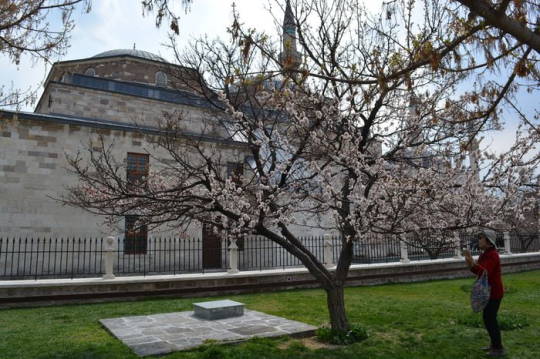
Bulgarians initiated several military actions
After the Bulgarians initiated several military actions against the Byzantine garrisons in Moesia and to the north of the Danube once again the Byzantine Emperor led a large army to the north of the Balkan Mountains. But the Bulgarian rulers used the knights of the German Emperor Frederick Barbarossa, who participated in the Third Crusade, to regain new Bulgarian territories from the Empire. Meanwhile Petar ceded the throne to his brother Assen (1190-1196), realizing that he was a better statesman and military commander Visit Bulgaria. In the following years the new Bulgarian kingdom added many Balkan regions to its territory. Finally King Assen I was assassinated by his cousin Ivanko who headed a conspiracy of boyars faithful to Constantinople, so Petar ascended the throne to rule for one more year, but he also became a victim of the treacherous plot…
On the throne came the third brother, Kaloyan (1197-1207), and showed himself as a wise statesman, a remarkable commander and skilled diplomat. The borders of Bulgaria already stretched far to the west. In 1202 the Byzantine Emperor and Kaloyan concluded a peace treaty – which actually verified the territorial acquisitions of the Second Bulgarian Kingdom – and the Tsar was pronounced as “Emperor of Bulgaria and Wallachia”. In 1204 the Crusaders captured Constantinople. The Byzantines rebelled against Baldwin I of Flanders, imposed on them as the first Emperor of the East.
They called Kaloyan to help them. Baldwin 1 laid claim to the former Byzantine territories which had fallen into Kaloyan’s hands, his Latin troops raided Thrace and seized a number of Bulgarian fortresses. After a quick preparation the decisive battle took place on 14lh April 1205 near the town of Adrianople. The Latins were defeated, their Emperor was taken prisoner to the fortress of Tumovo and executed after some time in what later became known as the Baldwin’s Tower. Now Kaloyan became the real master of the Balkans and, like Basil II who called himself “Killer of Bulgarians”, Kaloyan called himself “Killer of Byzantines”. Two years later another Latin army led by Boniface of Montferrat was routed and its leader died in action. Simeon’s dream of conquering the entire Byzantine Empire and of a triumphant Bulgarian parade in Constantinople was revived once again…
0 notes
Photo
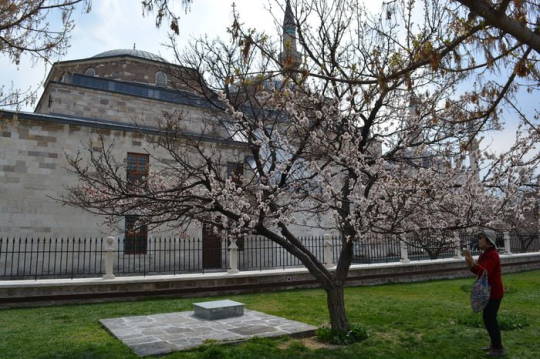
Bulgarians initiated several military actions
After the Bulgarians initiated several military actions against the Byzantine garrisons in Moesia and to the north of the Danube once again the Byzantine Emperor led a large army to the north of the Balkan Mountains. But the Bulgarian rulers used the knights of the German Emperor Frederick Barbarossa, who participated in the Third Crusade, to regain new Bulgarian territories from the Empire. Meanwhile Petar ceded the throne to his brother Assen (1190-1196), realizing that he was a better statesman and military commander Visit Bulgaria. In the following years the new Bulgarian kingdom added many Balkan regions to its territory. Finally King Assen I was assassinated by his cousin Ivanko who headed a conspiracy of boyars faithful to Constantinople, so Petar ascended the throne to rule for one more year, but he also became a victim of the treacherous plot…
On the throne came the third brother, Kaloyan (1197-1207), and showed himself as a wise statesman, a remarkable commander and skilled diplomat. The borders of Bulgaria already stretched far to the west. In 1202 the Byzantine Emperor and Kaloyan concluded a peace treaty – which actually verified the territorial acquisitions of the Second Bulgarian Kingdom – and the Tsar was pronounced as “Emperor of Bulgaria and Wallachia”. In 1204 the Crusaders captured Constantinople. The Byzantines rebelled against Baldwin I of Flanders, imposed on them as the first Emperor of the East.
They called Kaloyan to help them. Baldwin 1 laid claim to the former Byzantine territories which had fallen into Kaloyan’s hands, his Latin troops raided Thrace and seized a number of Bulgarian fortresses. After a quick preparation the decisive battle took place on 14lh April 1205 near the town of Adrianople. The Latins were defeated, their Emperor was taken prisoner to the fortress of Tumovo and executed after some time in what later became known as the Baldwin’s Tower. Now Kaloyan became the real master of the Balkans and, like Basil II who called himself “Killer of Bulgarians”, Kaloyan called himself “Killer of Byzantines”. Two years later another Latin army led by Boniface of Montferrat was routed and its leader died in action. Simeon’s dream of conquering the entire Byzantine Empire and of a triumphant Bulgarian parade in Constantinople was revived once again…
0 notes
Text
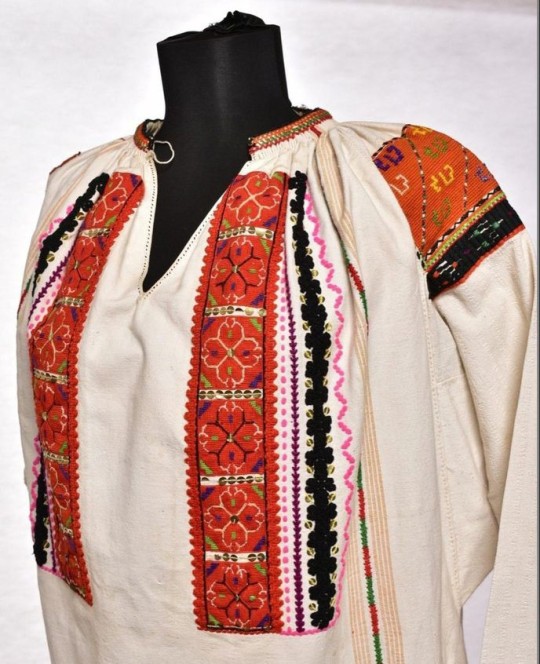
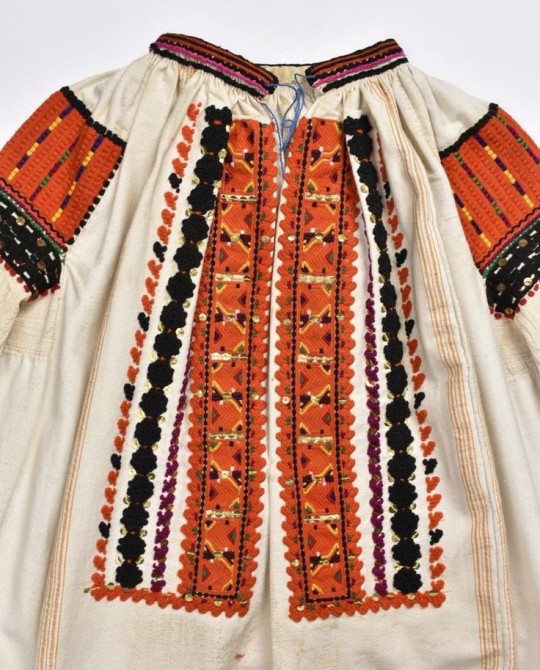
Embroidered chemises from Targovishte province, Northeastern Bulgaria. | Везани хърцойски ризи от Търговищко.
(via @UrbanBasketina on Pinterest)
2 notes
·
View notes
Photo

Legions of Noricum, Raetia & Dacia
The provinces Noricum, Raetia, and Dacia served as a buffer protecting Roman Empire against any possible outside threat. However, the region posed several internal problems for Rome: Pannonia and its ally Dalmatia rebelled against Roman occupancy, causing a three-year war, and Moesia was invaded by the Dacians during the reigns of both Domitian (r. 81-96 CE) and Trajan (r. 98-117 CE).
Lastly, during the 2nd and 3rd centuries CE, the region was repeatedly invaded by the Goths, Alemanni, and Marcomanni. While Noricum, Raetia, and Dacia provided a buffer between Rome and the Germanic tribes to the north, in time, they succumbed to the invaders they were supposed to keep out.
The Province of Noricum
Located in the eastern Alps between Raetia and Pannonia, its ideal location south of the Danube and rich deposits of iron ore and gold made Noricum a valuable asset to the coffers of the Roman Empire. The discovery of gold in the 2nd century BCE had drawn Roman settlers into the region only to be quickly expelled by the native Taurisci. However, Roman merchants continued to conduct business through small trading settlements. Always viewed as an ally, the region was finally conquered in 16 BCE during the reign of Roman emperor Augustus (r. 27 BCE to 14 CE). However, unlike other provinces, it did not receive a legion of its own – Legio Italica II – until the reign of Marcus Aurelius (161-180 CE). The province was later divided into two – Noricum Ripensis and Noricum Mediterranean – by Diocletian (284-305 CE). It was invaded by northern Germanic tribes and abandoned in the 5th century CE.
Continue reading...
19 notes
·
View notes
Photo
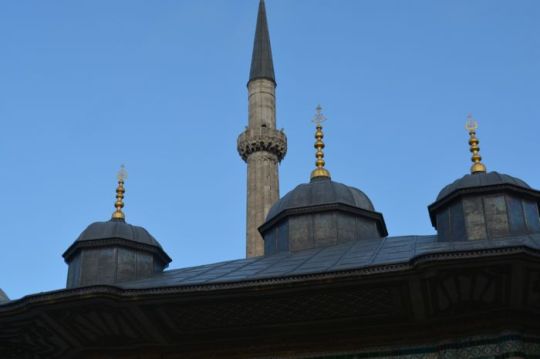
Against the Persians and Hellas
Thracian kingdoms waged wars against the Persians and Hellas for centuries. But the powerful Macedonian state of Philip II managed to crash them. It was his son, Alexander the Great, who quickly appreciated the military virtues of the Thracians and let them join the multilingual Macedonian army. After his death in 323 B. C. the Thracian king Seuth III succeeded to restore partially the former state and so the walls of the new capital city of Seuthopolis rose close to the location of present-day Bulgarian town of Kazanluk.
During the 3rd century B.C. the Romans managed to conquer the ancient Thracian lands. Later, in 74 B. C., a slave of Thracian origin who ‘graduated’ a gladiator school and became famous under the name of Spartacus headed the most continuous and mass insurrection in ancient Rome. That was the period of the so called Romanization of the Thracian world which continued until the 4th century A. D. when “The Great Migration of Peoples” began and the Thracians had to keep Celts, Huns, Goths, Avars and other barbarian tribes from invading their lands. In these circumstances the Thracians – partially Hellenized and Romanized, and having their rich and complex cultural heritage – had to stand before one of the most significant historical events for them: the disintegration of the Roman Empire in 395. In less than a century its western half was put to a collapse under the ravaging barbarian tribes from the north but the eastern part survived under the name of Byzantium with Constantinople as a capital city. Those were the days when the founders of the First Bulgarian Kingdom stepped Private Tours Balkan onto their future land…
Slavs and Proto-Bulgarians
During the 4lh to 7lh centuries the Slavs were the most multitudinous peoples in Europe.
They belonged to the Indo-European linguistic family and historians classify them usually in three main divisions: West Slavs include Poles, Czechs, Slovaks and the Wends who lived in Germany east of the river Elbe; East Slavs include Great Russians,
Little Russians (Ukrainians) and White Russians (Belorussians);
South Slavs include Serbs
Croats, Slovenes, Macedonians and Bulgarians. Originally the Slavs inhabited the lands to the north of the Carpathian Mountains but by the beginning of the 6th century Slavic tribes undertook marches to the south and crossed the Danube to loot in the territory of the Byzantine Empire. At that time a tribe of Tatar nomads, the Avars, established a kingdom (407- 653) in central Asia. In 558 they crossed the Urals and settled in Dacia after which started threatening the western countries and, of course, Constantinople. The Avars forced some of the Slavic tribes to settle permanently in various regions of the Balkan Peninsula. So were differentiated the “Bulgarian group” – which stayed in Moesia, Thrace and Macedonia – and the Serbo-Croatian group which gradually withdrew to the western half of the peninsula.
0 notes
Photo
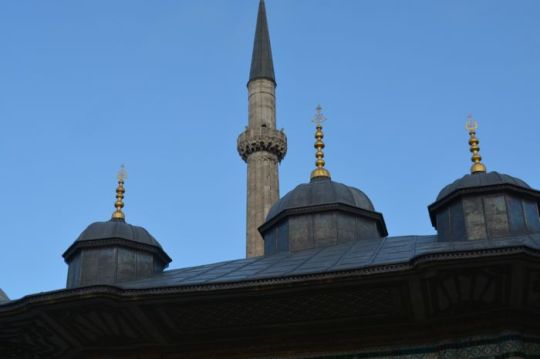
Against the Persians and Hellas
Thracian kingdoms waged wars against the Persians and Hellas for centuries. But the powerful Macedonian state of Philip II managed to crash them. It was his son, Alexander the Great, who quickly appreciated the military virtues of the Thracians and let them join the multilingual Macedonian army. After his death in 323 B. C. the Thracian king Seuth III succeeded to restore partially the former state and so the walls of the new capital city of Seuthopolis rose close to the location of present-day Bulgarian town of Kazanluk.
During the 3rd century B.C. the Romans managed to conquer the ancient Thracian lands. Later, in 74 B. C., a slave of Thracian origin who ‘graduated’ a gladiator school and became famous under the name of Spartacus headed the most continuous and mass insurrection in ancient Rome. That was the period of the so called Romanization of the Thracian world which continued until the 4th century A. D. when “The Great Migration of Peoples” began and the Thracians had to keep Celts, Huns, Goths, Avars and other barbarian tribes from invading their lands. In these circumstances the Thracians – partially Hellenized and Romanized, and having their rich and complex cultural heritage – had to stand before one of the most significant historical events for them: the disintegration of the Roman Empire in 395. In less than a century its western half was put to a collapse under the ravaging barbarian tribes from the north but the eastern part survived under the name of Byzantium with Constantinople as a capital city. Those were the days when the founders of the First Bulgarian Kingdom stepped Private Tours Balkan onto their future land…
Slavs and Proto-Bulgarians
During the 4lh to 7lh centuries the Slavs were the most multitudinous peoples in Europe.
They belonged to the Indo-European linguistic family and historians classify them usually in three main divisions: West Slavs include Poles, Czechs, Slovaks and the Wends who lived in Germany east of the river Elbe; East Slavs include Great Russians,
Little Russians (Ukrainians) and White Russians (Belorussians);
South Slavs include Serbs
Croats, Slovenes, Macedonians and Bulgarians. Originally the Slavs inhabited the lands to the north of the Carpathian Mountains but by the beginning of the 6th century Slavic tribes undertook marches to the south and crossed the Danube to loot in the territory of the Byzantine Empire. At that time a tribe of Tatar nomads, the Avars, established a kingdom (407- 653) in central Asia. In 558 they crossed the Urals and settled in Dacia after which started threatening the western countries and, of course, Constantinople. The Avars forced some of the Slavic tribes to settle permanently in various regions of the Balkan Peninsula. So were differentiated the “Bulgarian group” – which stayed in Moesia, Thrace and Macedonia – and the Serbo-Croatian group which gradually withdrew to the western half of the peninsula.
0 notes
Photo

Bulgarians initiated several military actions
After the Bulgarians initiated several military actions against the Byzantine garrisons in Moesia and to the north of the Danube once again the Byzantine Emperor led a large army to the north of the Balkan Mountains. But the Bulgarian rulers used the knights of the German Emperor Frederick Barbarossa, who participated in the Third Crusade, to regain new Bulgarian territories from the Empire. Meanwhile Petar ceded the throne to his brother Assen (1190-1196), realizing that he was a better statesman and military commander Visit Bulgaria. In the following years the new Bulgarian kingdom added many Balkan regions to its territory. Finally King Assen I was assassinated by his cousin Ivanko who headed a conspiracy of boyars faithful to Constantinople, so Petar ascended the throne to rule for one more year, but he also became a victim of the treacherous plot…
On the throne came the third brother, Kaloyan (1197-1207), and showed himself as a wise statesman, a remarkable commander and skilled diplomat. The borders of Bulgaria already stretched far to the west. In 1202 the Byzantine Emperor and Kaloyan concluded a peace treaty – which actually verified the territorial acquisitions of the Second Bulgarian Kingdom – and the Tsar was pronounced as “Emperor of Bulgaria and Wallachia”. In 1204 the Crusaders captured Constantinople. The Byzantines rebelled against Baldwin I of Flanders, imposed on them as the first Emperor of the East.
They called Kaloyan to help them. Baldwin 1 laid claim to the former Byzantine territories which had fallen into Kaloyan’s hands, his Latin troops raided Thrace and seized a number of Bulgarian fortresses. After a quick preparation the decisive battle took place on 14lh April 1205 near the town of Adrianople. The Latins were defeated, their Emperor was taken prisoner to the fortress of Tumovo and executed after some time in what later became known as the Baldwin’s Tower. Now Kaloyan became the real master of the Balkans and, like Basil II who called himself “Killer of Bulgarians”, Kaloyan called himself “Killer of Byzantines”. Two years later another Latin army led by Boniface of Montferrat was routed and its leader died in action. Simeon’s dream of conquering the entire Byzantine Empire and of a triumphant Bulgarian parade in Constantinople was revived once again…
0 notes